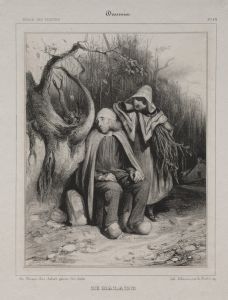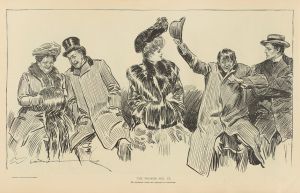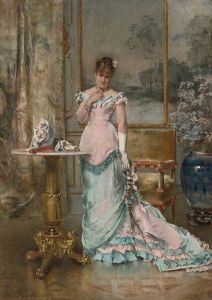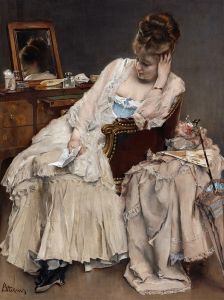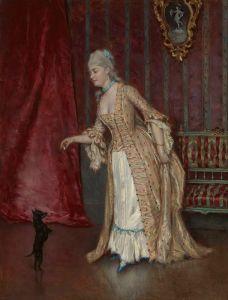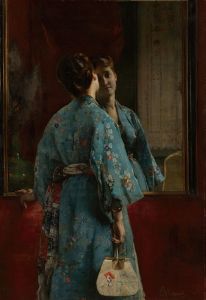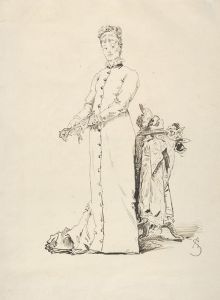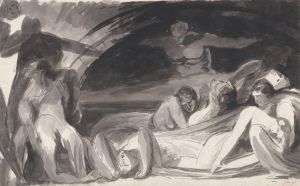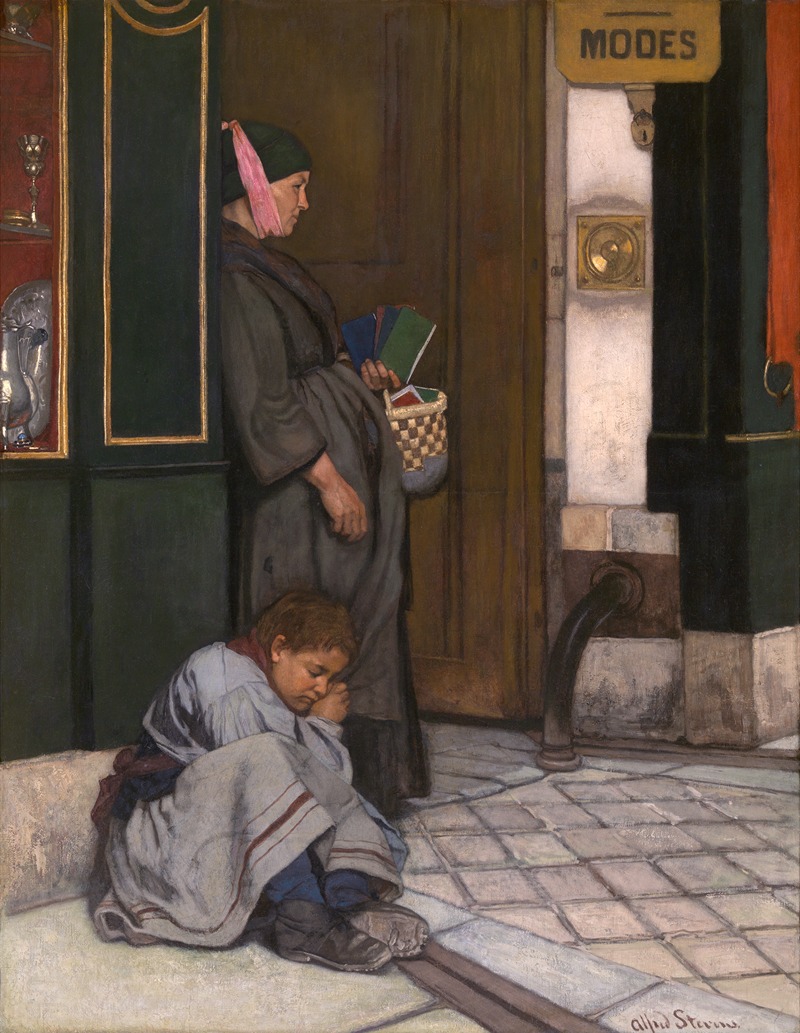
Begging Tolerated
A hand-painted replica of Alfred Stevens’s masterpiece Begging Tolerated, meticulously crafted by professional artists to capture the true essence of the original. Each piece is created with museum-quality canvas and rare mineral pigments, carefully painted by experienced artists with delicate brushstrokes and rich, layered colors to perfectly recreate the texture of the original artwork. Unlike machine-printed reproductions, this hand-painted version brings the painting to life, infused with the artist’s emotions and skill in every stroke. Whether for personal collection or home decoration, it instantly elevates the artistic atmosphere of any space.
Alfred Stevens, a prominent Belgian painter of the 19th century, is known for his detailed and emotive works that often depict scenes of contemporary life. One of his notable paintings is "Begging Tolerated," which reflects his keen interest in social issues and his ability to capture the nuances of human emotion and societal conditions.
"Begging Tolerated" is a compelling example of Stevens' genre painting, a style that focuses on scenes from everyday life. Although specific details about the painting's creation, such as the exact year it was painted, are not widely documented, it is consistent with Stevens' broader body of work from the mid to late 19th century. During this period, Stevens was particularly interested in exploring themes related to social class and the human condition, often highlighting the disparities between wealth and poverty.
The painting likely portrays a scene that Stevens would have observed in the urban environments of his time, possibly in Brussels or Paris, where he spent much of his career. These cities were undergoing significant changes during the 19th century, with rapid industrialization and urbanization leading to stark contrasts between the affluent and the impoverished. Stevens' work often reflects these societal shifts, and "Begging Tolerated" is no exception, as it captures the plight of the less fortunate in a rapidly modernizing world.
Stevens was known for his meticulous attention to detail and his ability to convey emotion through subtle expressions and gestures. In "Begging Tolerated," he likely employs these techniques to evoke empathy and reflection in the viewer. The composition of the painting, the use of light and shadow, and the positioning of the figures all contribute to a narrative that invites contemplation on the social issues of the time.
While Stevens is often celebrated for his portraits of fashionable women, his genre paintings like "Begging Tolerated" demonstrate his versatility and his commitment to addressing more profound social themes. These works provide insight into the complexities of 19th-century society and the challenges faced by those living on its margins.
Alfred Stevens' contribution to art extends beyond his technical skill; his paintings serve as historical documents that offer a window into the societal dynamics of his era. "Begging Tolerated" is a testament to his ability to blend artistic beauty with social commentary, making it a significant piece in understanding both his oeuvre and the broader context of 19th-century European art.
In summary, "Begging Tolerated" by Alfred Stevens is a poignant reflection of the social realities of the 19th century, captured through the lens of a masterful artist. While specific details about the painting may be scarce, its thematic resonance and artistic execution continue to speak to audiences, underscoring Stevens' enduring legacy in the world of art.








